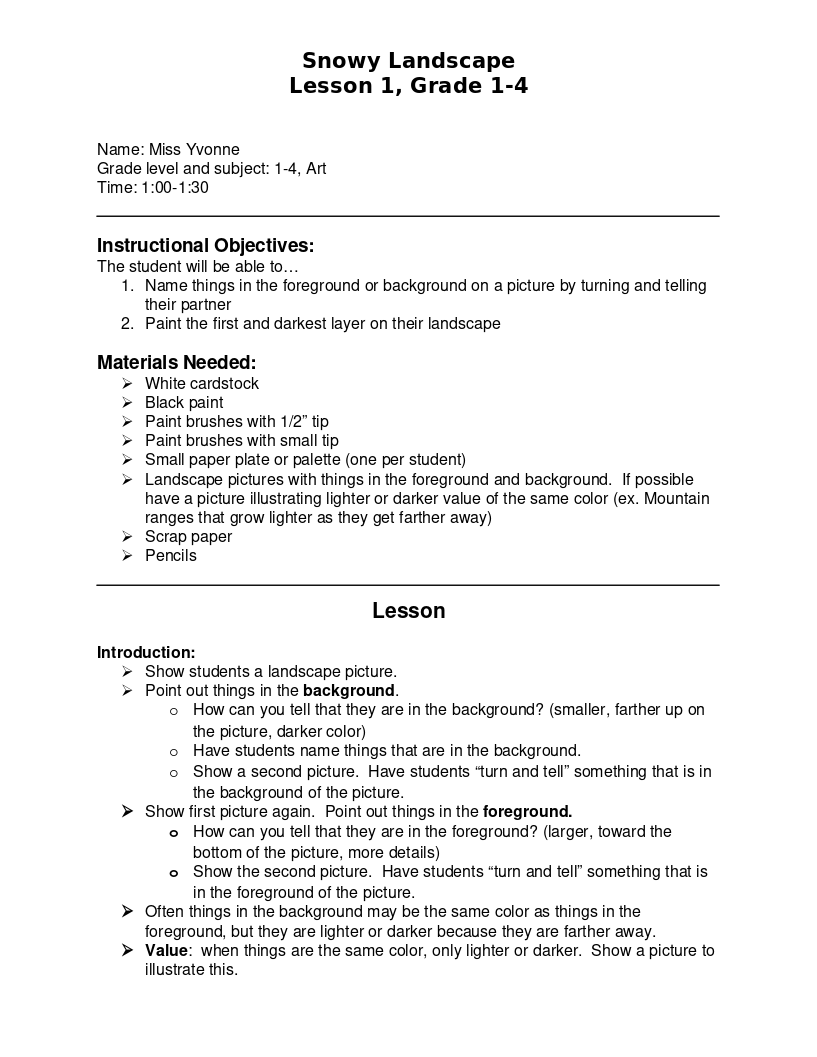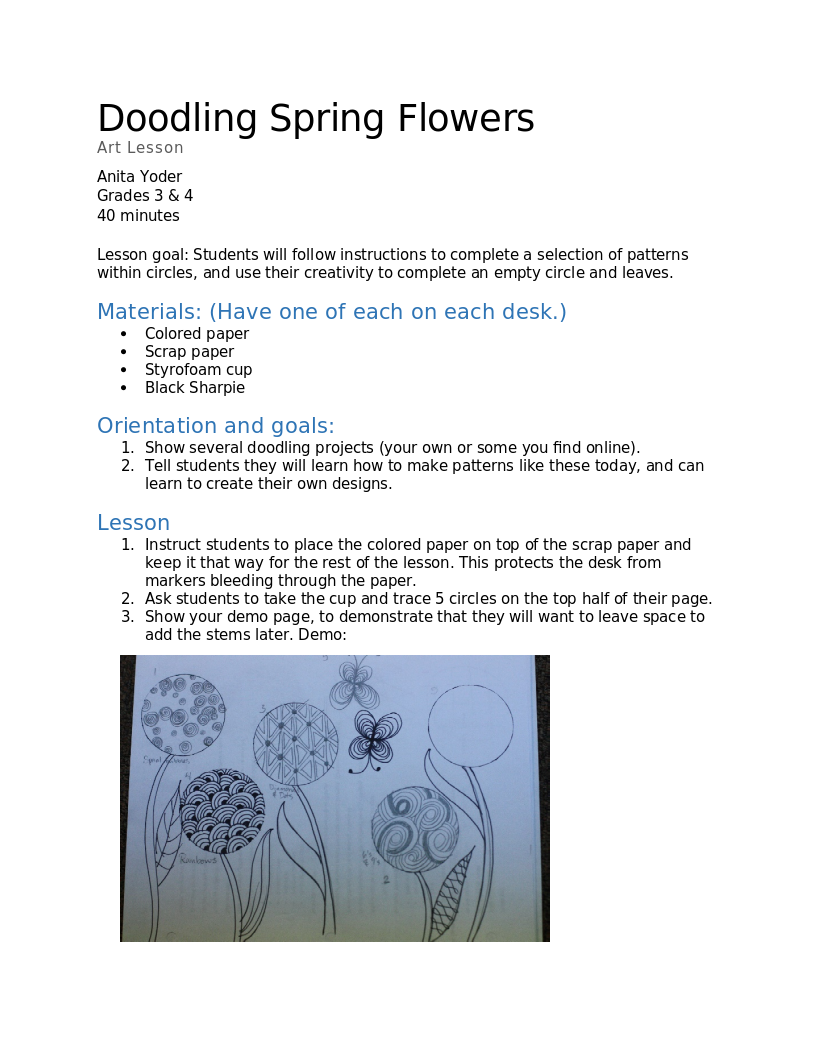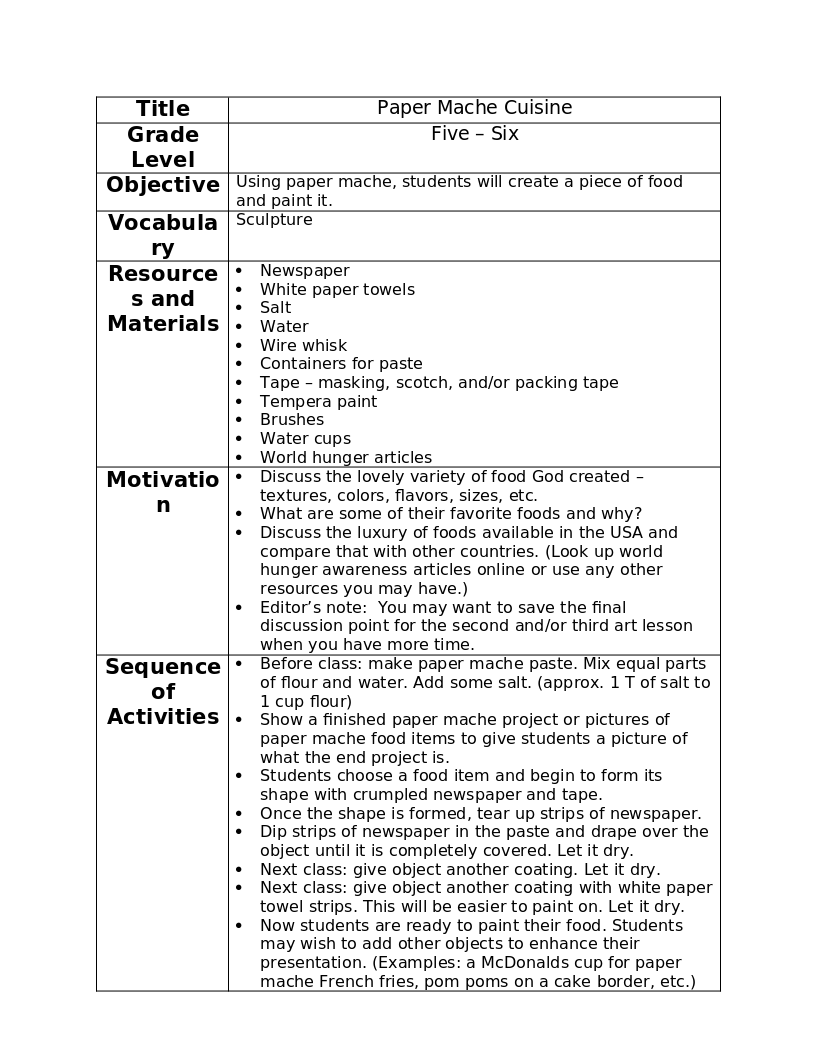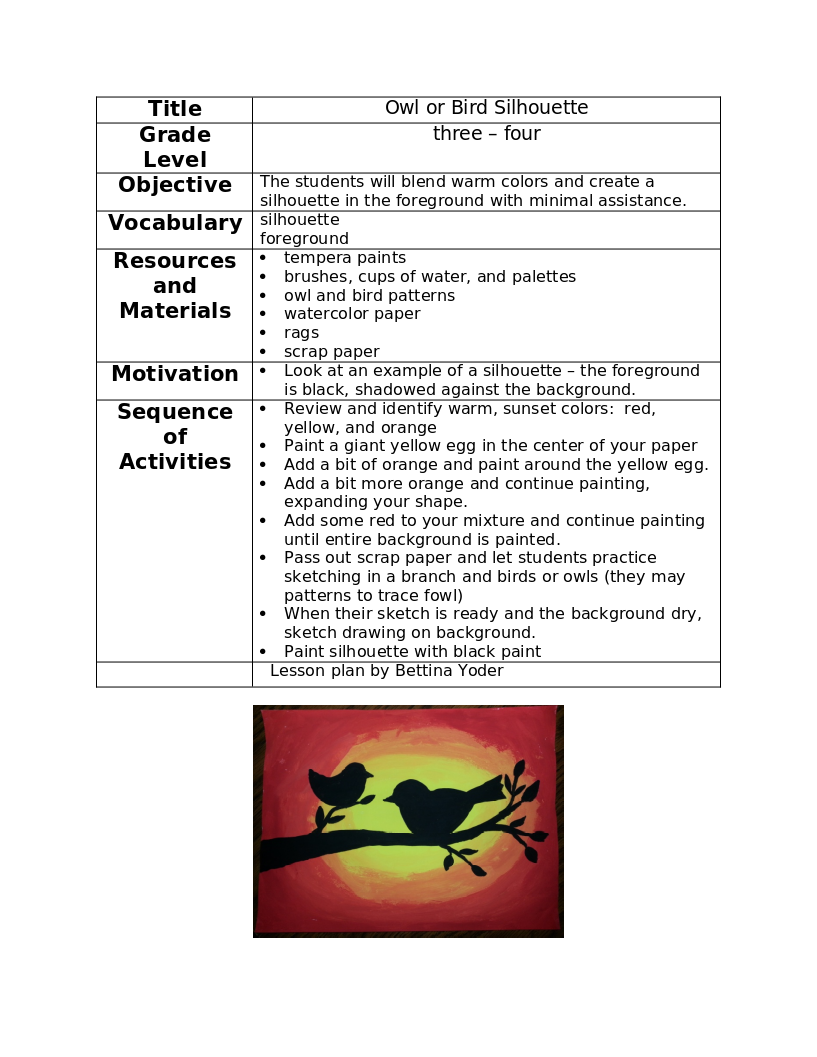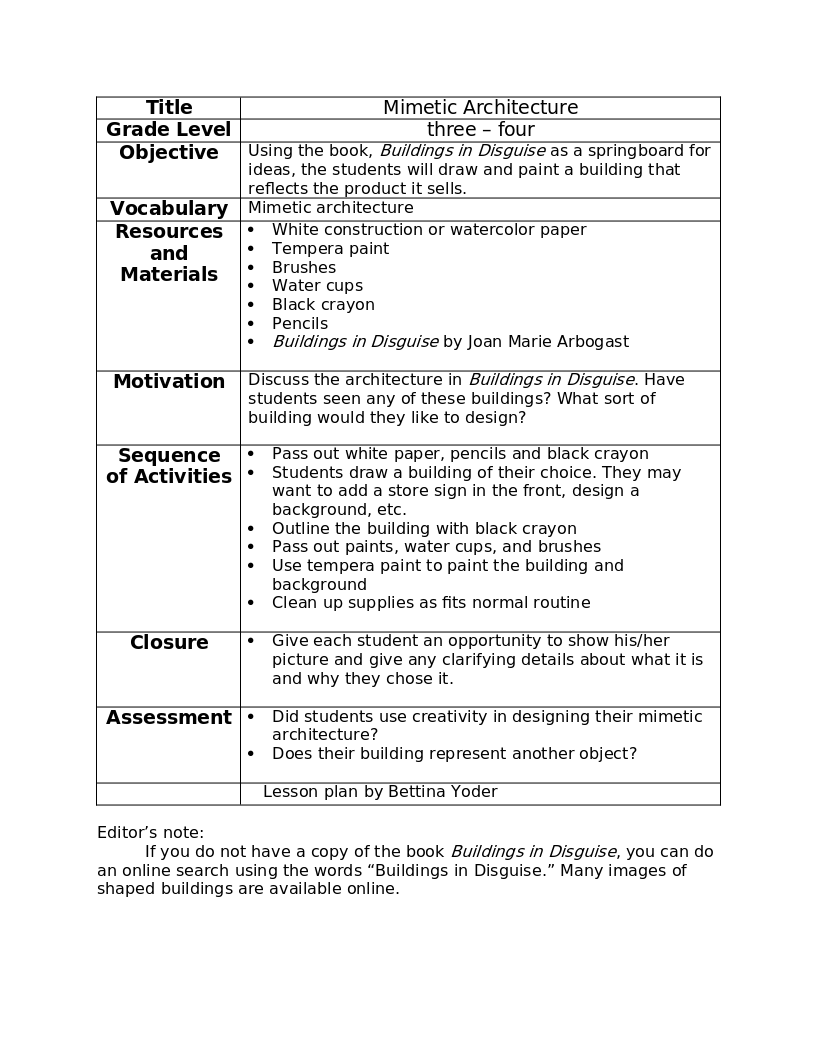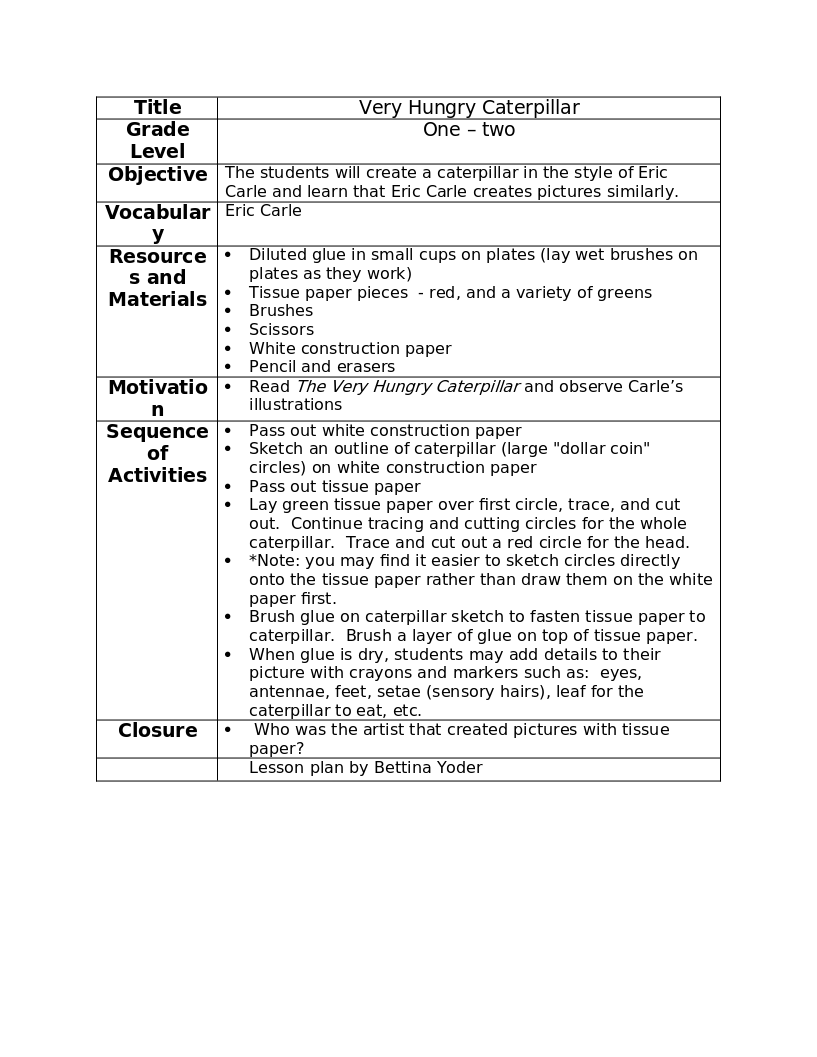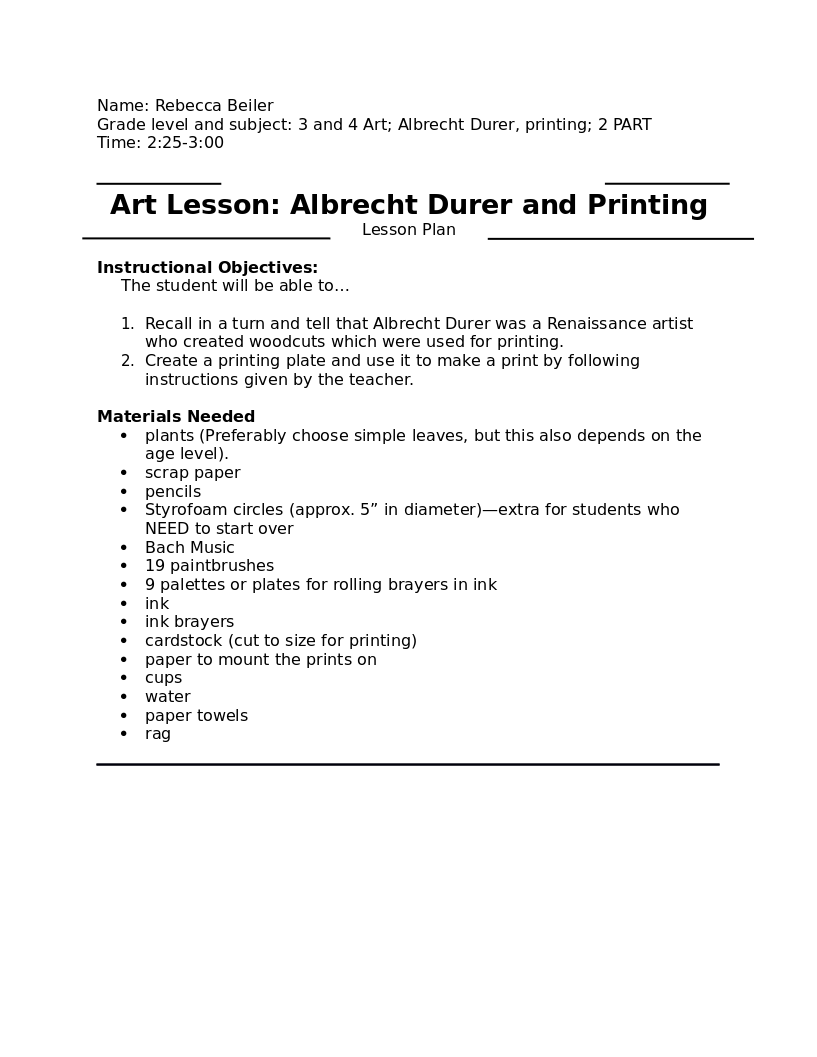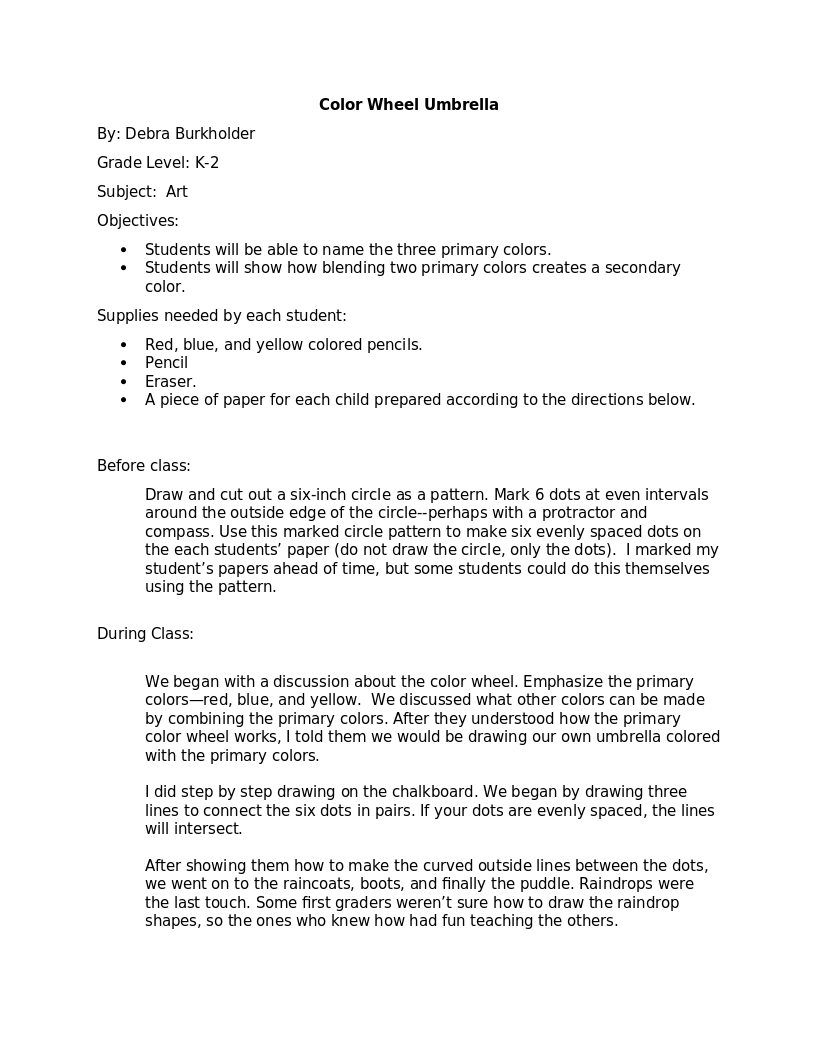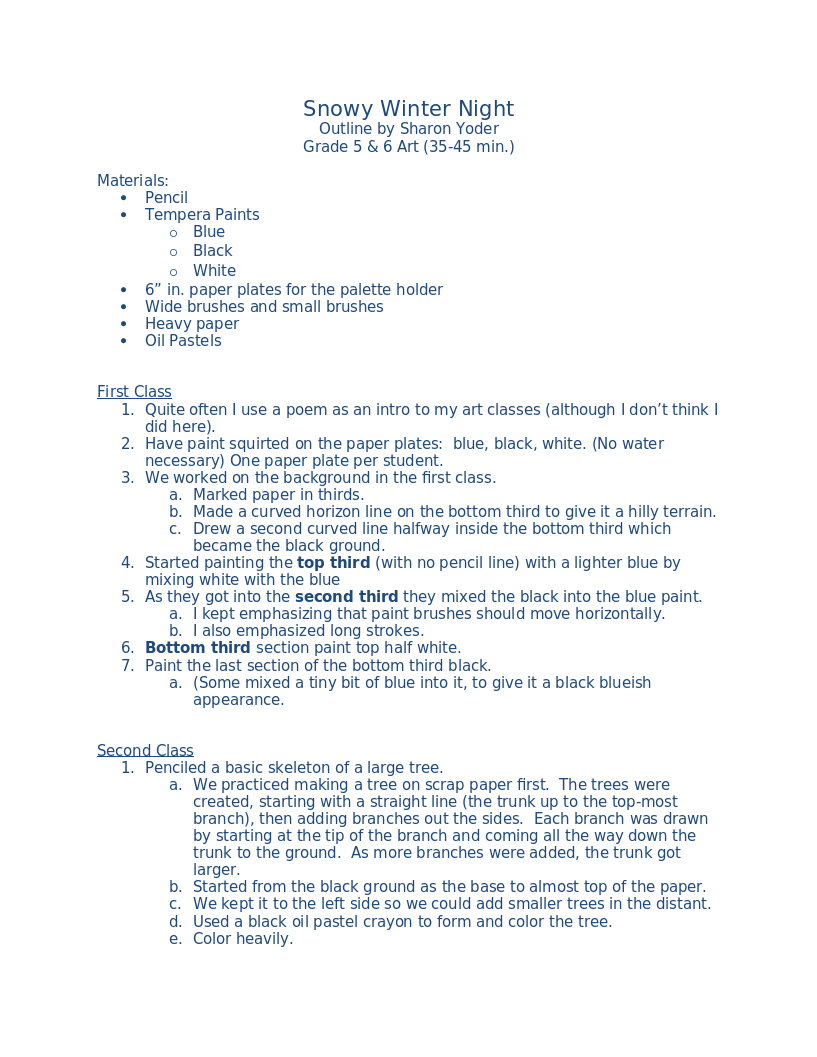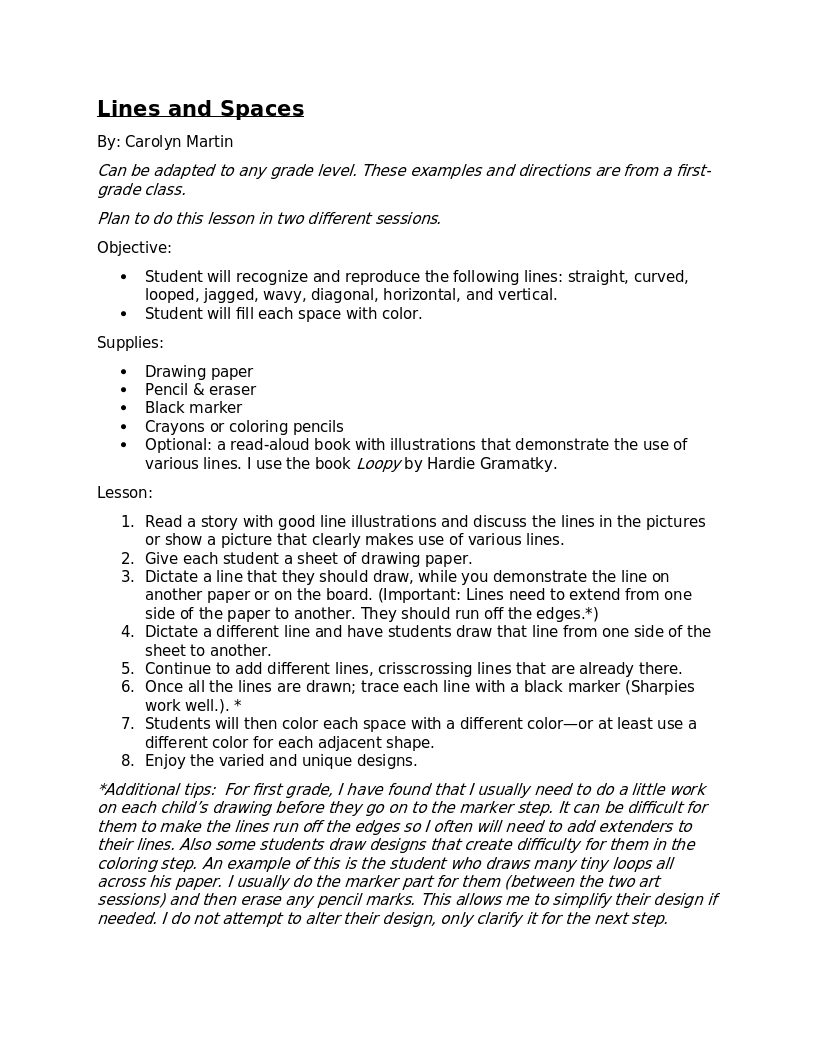Cool and Warm Colors on Trees
★★★★★
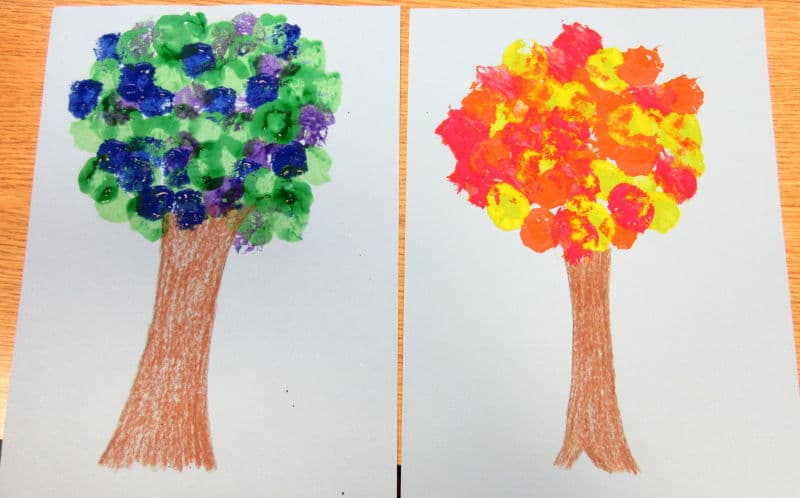
Grade Level: K-2
Objectives:
- Students will show their knowledge of cool and warm colors by dab painting a tree’s leaves with either the three warm colors or the three cool colors.
- Students will follow instructions to paint with cotton balls.
Materials needed:
- Light blue construction paper (one per student)
- Brown crayons
- Tempera paint-red, orange, yellow, green, blue, purple
- Small paper plates
- Cotton balls
Lesson
Begin the class by talking with the students about color. Here are some questions you could ask:
When you turn on the water in the bathroom, often you see two colors on the faucet. What are they? (red and blue) Which color is hot? Which color is cold?
Can you think of other hot things that are red? (fire, stove burner, heater)
Red is known as a warm color. Would you like to guess another warm color?
Lead them to guess orange and yellow. Have them say things that they may think of that are warm that are orange or yellow. (sun, fire)
Talk about cool colors. A few questions you might ask:
What color on the faucet means cold? (blue)
What things can you think of that are blue that are cold or cool? (water in a swimming pool, ice pack)
Would you like to guess the other two cool colors?
After they guess the other two cool colors, see if they can come up with cool things that are green or purple. (for example, grass, blueberries)
Talk about the project that you will do–painting a tree’s leaves with either cool or warm colors.
If you have completed one yourself (highly advisable!), show them how the finished project will look. Then you are ready to begin.
Pass out a piece of light blue construction paper or card stock to each child.
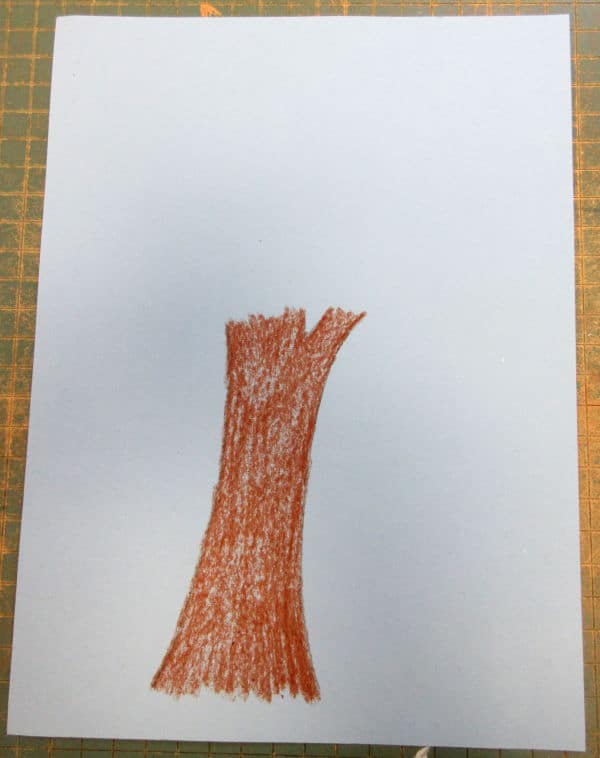 First, draw the tree’s trunk. It can be fat or thin but should not go more than half way up the paper. Color the trunk brown with a crayon. When finished, each child should put their initials or name at the bottom of the paper.
First, draw the tree’s trunk. It can be fat or thin but should not go more than half way up the paper. Color the trunk brown with a crayon. When finished, each child should put their initials or name at the bottom of the paper.
Explain that they will get to paint leaves on their trees, either warm colored leaves or cool colored leaves. Review—which colors are warm? Which colors are cool?
They will use cotton balls to paint their leaves. This part does not take long! Explain to students (perhaps demonstrate?) how to dab a cotton ball into the paint and dab it onto the tree. They should not smear the paint onto the tree, but dab. When the tree is full of paint leaves, they must stop or their paper will get soggy. Have students say whether they want to make their tree a cool color tree or warm color tree.
Pass out small paper plates with paint “puddles” on them (having these prepared in advance is necessary if your class is large), either cool colored paint or warm colored paint.
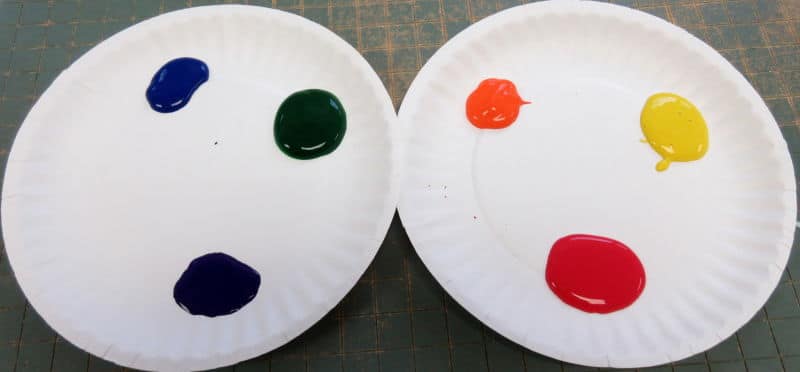
Notice the color puddles of purple and blue are a bit smaller than green. This was intentional so that the cool trees would have more green than blue and purple leaves.
Give each child three cotton balls, one for each color and let them dab the paint onto the top of the trees. If they have warm color leaves, some could be on the ground under the tree.
When I did my tree, I did one color for a bit, then switched out to doing another color, doing each color then coming back and filling in the empty spaces the second time around.
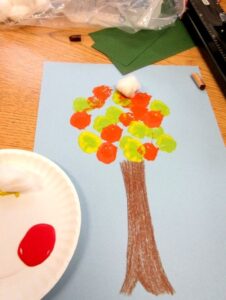

I started with the lightest color, then added in orange, then red. I filled in more with yellow and orange and red, as needed.
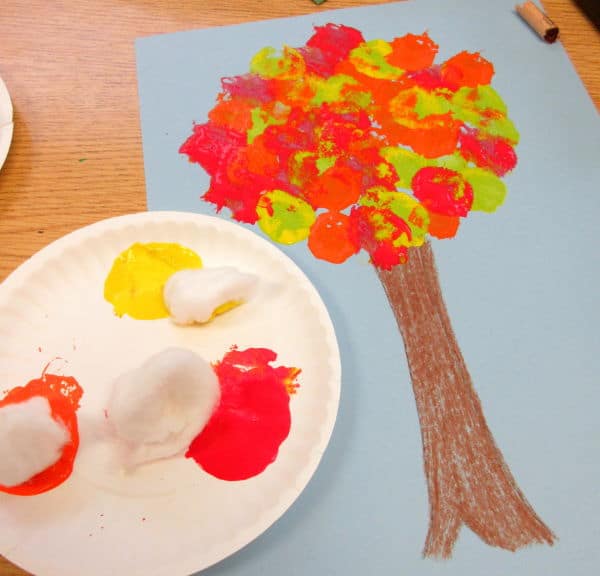
Be watchful for the child who is having so much fun dabbing that she wants to fill the entire paper with paint or the one who smears the paint instead of dabbing.
My two finished trees:

Have a table in the room or designated area for students to put their trees to dry when they are finished. A fun way to end art class is to stand around the table admiring everybody’s work. Have each student say something they like about someone else’s picture.
Hang the pictures on the wall once they have dried and enjoy the splashes of color!
Related Items
Leave a Reply
Feedback
